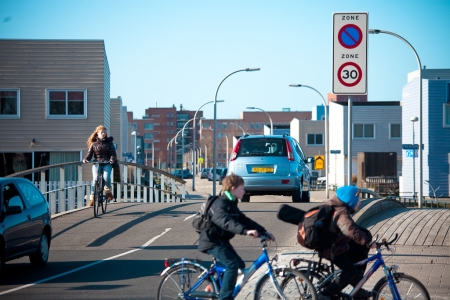30 km/h zones are used by both slow and motorized traffic. This means that in principle there are no separate facilities for cyclists, and sometimes not for pedestrians either. Through car traffic is kept out by restricting the number of accesses (entrances) to the areas, by applying one-way traffic or by constructing a ‘cut’ in a formerly main route [1]. Low driving speeds are physically enforced, for example by constructing road humps, plateaus, road narrowings or chicanes [2].
The beginning and the end of a 30 km/h zone must be clearly identified by a gate construction: traffic signs, supported by an entry and exit construction. Within a 30 km/h zone traffic from the right has priority; in principle there are no priority roads or priority intersections. Exceptions to this are the main cycling routes and bus routes: priority crossroads are allowed here. When leaving a 30 km/h zone through the exit construction, priority must be granted to all other traffic.
|
|
|
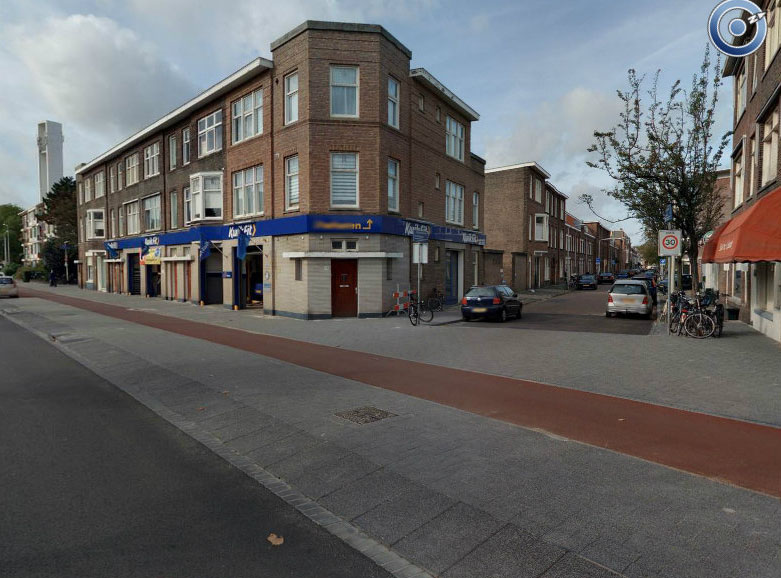 Access road ending in an exit construction (Source: CycloMedia)
Access road ending in an exit construction (Source: CycloMedia)
Sober design
In the past, many of the 30 km/h zones were given a sober design. Sometimes only a Zone 30 sign was placed, sometimes the speed-reducing measures were limited to 'dangerous' locations e.g. by constructing a plateau or a mini roundabout at an intersection [3]. This sober design was particularly recommended for the implementation of the start-up phase of Sustainable Safety which commenced late 1997 (see also SWOV Fact sheet Sustainably safe road traffic). Its goal was to realize many 30 km/h zones in a short time at comparatively low cost. This sober design was not intended to be the final situation, but was considered to be a transitional situation to a more complete design. However, in actual fact most of the 30 km/h zones with a sober design still have this sober layout [4].
30km/uur-wegen
In addition to 30 km/h zones there are also isolated 30 km/h roads. These are situated in both urban and rural areas. Generally, 30 km/h roads are only indicated by a 30 km/h speed limit sign: infrastructural measures to support the speed limit are usually lacking. These roads often have a distributor function in addition to a residential function. In this case a 30 km/h road must be considered a ‘grey road’. A ‘grey road’ can be defined as a road with multiple functions, namely flow and access, whereby (usually spatial) conditions obstruct meeting the functional and operational requirements in full. Therefore, use and design are not entirely compatible (see also SWOV Fact sheet Principles for safe road design)
|
|
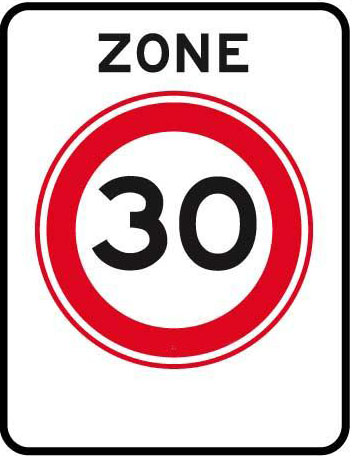 A01-30-ZB
A01-30-ZB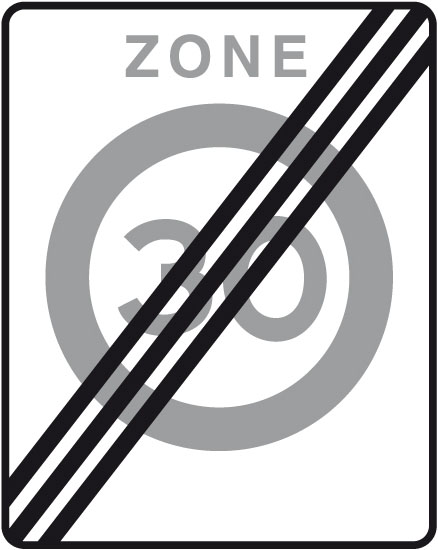 A02-30-ZE
A02-30-ZE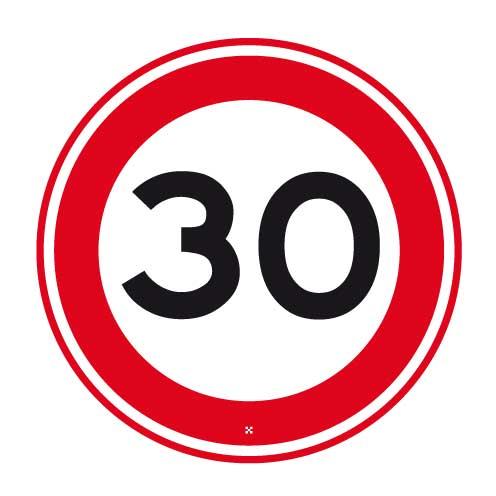 A01-30 maximum snelheid 30
A01-30 maximum snelheid 30